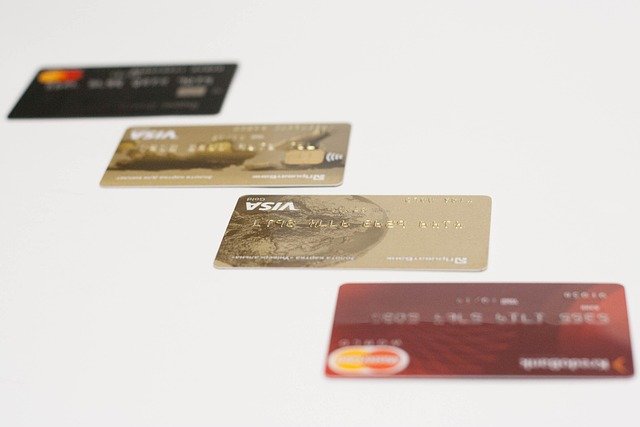Understanding Credit Cards: Features, Types, and Responsible Usage
Credit cards have become an integral part of modern financial life, offering convenience and flexibility in how we purchase goods and services. Unlike cash transactions, credit cards allow consumers to buy items now and pay for them later, essentially providing a short-term loan from the issuing financial institution. This form of payment has transformed how people manage their finances, offering benefits like purchase protection and rewards while also presenting potential pitfalls if not managed properly. Understanding how credit cards function and their various features is essential for anyone looking to make informed financial decisions in today's economy.

What Credit Cards Are and How They Work in Everyday Transactions
Credit cards operate on a relatively simple principle: they provide a revolving line of credit that allows cardholders to make purchases up to a predetermined limit. When you use a credit card, the issuing bank pays the merchant, and you later repay the bank according to the terms of your agreement. This transaction process happens in seconds through electronic payment networks like Visa, Mastercard, American Express, or Discover.
The credit card’s magnetic stripe or embedded chip contains your account information, which is securely transmitted during transactions. Most credit cards operate on a billing cycle, typically 30 days, after which the cardholder receives a statement detailing all transactions made during that period. Cardholders then have options to pay the balance in full (avoiding interest charges) or make a minimum payment and carry the remaining balance forward, accruing interest on the unpaid amount.
Many credit cards also include security features like fraud protection, encryption technology, and zero-liability policies that protect consumers from unauthorized charges, making them safer than carrying cash for many transactions.
Different Types of Credit Cards Available and Their Key Features
The credit card market offers diverse options tailored to different financial needs and lifestyles:
-
Rewards Credit Cards: These cards earn points, miles, or cash back on purchases. Travel rewards cards provide airline miles or hotel points, while cash-back cards offer a percentage of spending back as statement credits or direct deposits. Some provide bonus rewards in specific categories like groceries, gas, or dining.
-
Secured Credit Cards: Designed for those with limited or damaged credit history, these require a security deposit that typically equals the credit limit. They help establish or rebuild credit when used responsibly.
-
Balance Transfer Cards: These offer low or 0% introductory APR periods for transferring existing credit card debt, helping consumers save on interest while paying down balances.
-
Student Credit Cards: Created specifically for college students with limited credit history, these often feature lower credit limits, educational resources, and sometimes rewards for good grades.
-
Business Credit Cards: These provide separate expense tracking for business owners, often with rewards tailored to business spending categories and additional employee cards.
-
Store Credit Cards: Offered by specific retailers, these typically provide discounts, special financing, or rewards for purchases at those stores, though they often carry higher interest rates than general-purpose cards.
How Credit Cards Impact Spending Habits and Financial Management
Credit cards significantly influence consumer spending behavior and financial habits. Research suggests people tend to spend more when using credit cards compared to cash because the “pain of payment” is delayed. This psychological disconnect can lead to overspending if not carefully monitored.
However, credit cards also offer valuable tools for financial management. They provide detailed spending records for budgeting and tax purposes, consolidate purchases into single monthly payments, and offer purchase protection that cash cannot. Many consumers use credit cards strategically, paying balances in full to avoid interest while maximizing rewards on planned purchases.
Credit cards also impact long-term financial health through credit reporting. Payment history and credit utilization (the percentage of available credit being used) are major factors in determining credit scores. Responsible credit card use can build a positive credit history, potentially leading to better interest rates on mortgages, auto loans, and other financial products in the future.
Tips for Using Credit Cards Responsibly to Avoid Common Issues
To maximize the benefits of credit cards while minimizing risks, consider these responsible usage practices:
-
Pay balances in full each month whenever possible to avoid interest charges, which can quickly negate any rewards benefits earned.
-
Set up automatic payments to avoid late fees and potential damage to your credit score from missed payments.
-
Keep credit utilization below 30% of your total available credit to maintain a healthy credit score. This may mean making multiple payments per month if you regularly approach your limit.
-
Review statements carefully for unauthorized charges and report them immediately to your card issuer.
-
Understand all fees and terms, including annual fees, foreign transaction fees, cash advance fees, and penalty APRs that might be triggered by late payments.
-
Avoid cash advances which typically carry higher interest rates that begin accruing immediately without grace periods.
-
Don’t apply for multiple cards in a short timeframe, as each application generally creates a hard inquiry on your credit report, potentially lowering your score temporarily.
Factors to Consider When Applying for a Credit Card
Selecting the right credit card requires careful consideration of several factors tailored to your financial situation:
-
Your credit score largely determines which cards you can qualify for and what interest rates you’ll receive. Check your score before applying to target appropriate card options.
-
Interest rates (APR) matter significantly if you might carry a balance. Even a few percentage points difference can substantially impact the cost of borrowing over time.
-
Fee structures vary widely between cards. Annual fees typically range from $0 to $550+ for premium cards. Only choose cards with annual fees if the benefits outweigh the cost for your spending habits.
-
Rewards programs should align with your spending patterns. A travel rewards card is valuable only if you travel frequently enough to utilize the benefits; otherwise, a simple cash-back card might provide better value.
-
Introductory offers like 0% APR periods or signup bonuses can provide significant value, but read the fine print regarding how long these promotions last and any requirements to earn bonuses.
-
Additional benefits such as purchase protection, extended warranties, travel insurance, or concierge services may provide value beyond the basic card features depending on your lifestyle.
-
Credit limit considerations should include your typical monthly spending and the impact on your credit utilization ratio.
Prices, rates, or cost estimates mentioned in this article are based on the latest available information but may change over time. Independent research is advised before making financial decisions.
Credit cards can be powerful financial tools when used strategically and responsibly. Understanding how they work, selecting the right card for your needs, and practicing disciplined usage habits can help you build credit, manage expenses, and potentially earn valuable rewards while avoiding the pitfalls of excessive debt and high interest charges. The key is viewing credit cards as payment tools rather than extensions of income, and maintaining awareness of how they fit within your broader financial plan.




